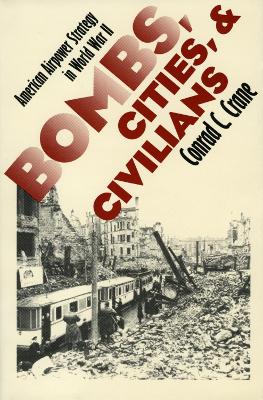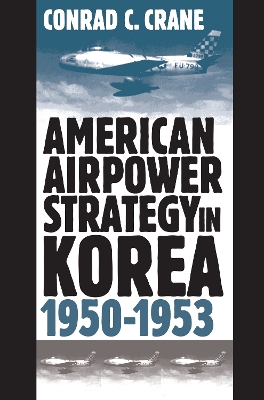Modern War Studies
2 total works
This is the first book to respond to recent assertions by other historians that due to military necessity, vague policies, or the desire to maximize technology, Army Air Forces bombers in World War II exercised little restraint on attacks against civilians. Even though bombing policy was influenced more by the attitudes of airmen in operations rooms and in combat than by directives from leaders in Washington, Crane contends that air commanders in the field did consistently conform to the guidelines of precision doctrine. Crane also shows, however, that different leaders, command arrangements, and combat conditions in the Pacific led to bombing policies that were much less discriminating concerning target selection. Focusing on specific operations and key operational commanders, such as Carl Spaatz in Europe and Curtis LeMay in the Pacific, he illustrates how different situations and personalities influenced bombing policies. Despite deviations from precision bombing doctrine in the Pacific that led to incendiary raids on Japanese cities, Crane contends that the pursuit of accurate bombing remained a primary goal throughout World War II and remains one today.
Beginning with the lessons gleaned from World War I, he traces the evolution of American doctrine and technology for conventional bombing through the wars in Korea, Vietnam, and the Persian Gulf. In the process, he demonstrates how public opinion, combat conditions, technological innovation, and the search for "Victory through Airpower" have affected bombing operations and military policy.
Conrad Crane analyzes both the successes and failures of the air force in Korea, offering a balanced treatment of how the air war in Korea actually unfolded. He examines the Air Force's contention that it could play a decisive role in a non-nuclear regional war but shows that the fledgling service was held to unrealistically high expectations based on airpower's performance in World War II, despite being constrained by the limited nature of the Korean conflict.
Crane exposes the tensions and rivalries between services, showing that emphasis on strategic bombing came at the expense of air support for ground troops, and he tells how interactions between army and air force generals shaped the air force's mission and strategy. He also addresses misunderstandings about plans to use nuclear, biological, and chemical weapons in the war and includes new information from pilot correspondence about the informal policy of hot pursuit over the Yalu that existed at the end of the war.
The book considers not only the actual air effort in Korea but also its ramifications. The air force doubled in size during the war and used that growth to secure its position in the defense establishment, but it wagered its future on its ability to deliver nuclear weapons in a high-intensity conflict--a position that left it unprepared to fight the next limited war in Vietnam.
As America observes the fiftieth anniversary of its initial engagement in Korea, Crane's book is an important reminder of the lessons learned there. And as airpower continues to be a cornerstone of American defense, this examination of its uses in Korea provides new insights about the air force's capabilities and limitations.

